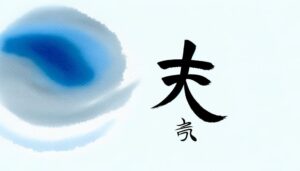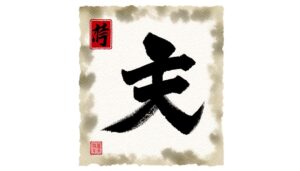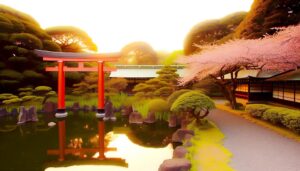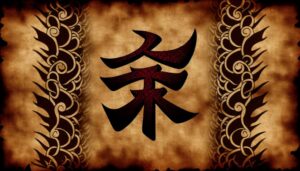Kanji Symbol for Death in Japanese?
In Japanese, the symbol for death is represented by the kanji character 死 (shi). This character signifies not only physical demise but also transformation and the transience of life.
Historically, it reflects Shinto and Buddhist influences, with the former focusing on purity and ancestral veneration, while the latter introduces karma and reincarnation. Samurai ethos revered death as an honorable conclusion, further shaping its cultural significance.
Today, the symbol 死 is seen in literature, media, and rituals, encapsulating the delicate balance between reverence for the deceased and the acceptance of impermanence. There's a wealth of insight into its historical and cultural nuances yet to explore.
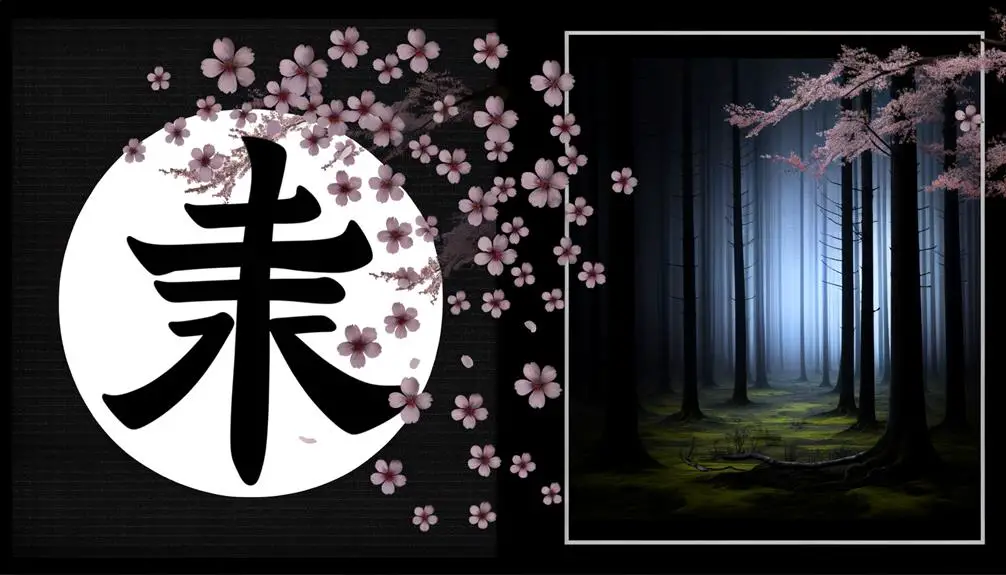
Key Takeaways
- The kanji for death in Japanese is 死 (shi).
- The kanji 死 (shi) comprises parts that signify decay and a person's demise.
- The pronunciation 'shi' is homophonic with the number four, leading to cultural taboos.
- Shinto and Buddhist beliefs influence death rituals and the cultural significance of the symbol.
- The symbol appears in modern media, legal documents, and idiomatic expressions.
Kanji for Death: Shi
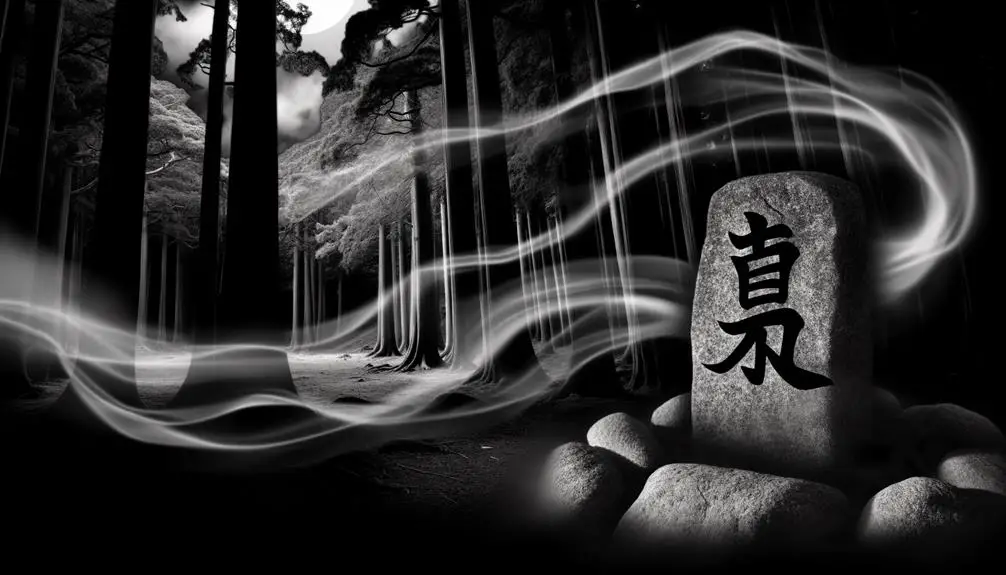
In Japanese, the kanji for death is 死 (shi), a character imbued with deep cultural significance and often regarded with a sense of reverence and caution.
The kanji comprises two parts: 歹 (gatsu), which signifies decay or badness, and 匕 (hi), symbolizing a person. Together, they evoke the notion of a person's demise.
The character 死 is more than a linguistic symbol; it embodies a profound sense of finality and transformation, reflecting Japanese cultural attitudes toward mortality.
Additionally, the pronunciation 'shi' is homophonic with the word for four (四), resulting in cultural practices such as avoiding the number four in certain contexts, like hospitals and hotels, due to its association with death.
Historical Context
The concept of death, or 'shi' (死), has been deeply influenced by ancient Japanese beliefs, including Shintoism's reverence for ancestral spirits and Buddhism's teachings on impermanence.
Moreover, the samurai, or 'bushi' (武士), viewed death with a sense of honor and duty, often embracing it through the practice of seppuku as a means to maintain dignity.
These historical perspectives have profoundly shaped the cultural understanding and representation of death in Japan.
Ancient Japanese Beliefs
Ancient Japanese beliefs surrounding death were deeply influenced by Shinto practices and Buddhist teachings, weaving a rich tapestry of rituals and symbols that reflected the complex relationship between the living and the deceased. Shinto, the indigenous spirituality of Japan, emphasized purity and the veneration of ancestral spirits, known as kami.
Meanwhile, Buddhism introduced concepts such as karma and reincarnation, profoundly shaping Japanese attitudes toward mortality.
- Shinto funerary rites: Ritual purification to ward off spiritual impurities.
- Buddhist funerals: Chanting of sutras to guide the soul to the afterlife.
- Ema boards: Wooden plaques inscribed with prayers for the deceased.
- Obon festival: Annual event honoring ancestors with dances and offerings.
- Butsudan altars: Household shrines dedicated to departed family members.
Understanding these elements provides insight into the ancient Japanese worldview on death.
Samurai and Death
While ancient Japanese beliefs about death were shaped by Shinto and Buddhist traditions, the samurai class developed a unique ethos regarding mortality that was deeply intertwined with their code of honor, Bushido.
The concept of “mono no aware” (物の哀れ), an awareness of the impermanence of things, permeated the samurai's perception of life and death. Bushido dictated that honor was paramount, and a samurai would rather die than live with shame or dishonor.
This valorization of loyalty and sacrifice found its ultimate expression in the ritual of seppuku (切腹), or ritual suicide, viewed as a means to restore honor. Understanding these cultural nuances offers a profound insight into the historical mindset of the samurai, where death was not feared but embraced as a noble end.
Cultural Significance

The symbol for death in Japanese, 死 (shi), carries profound cultural significance, rooted deeply in historical context and evolving with societal changes.
Historically, it has been enveloped in rituals and taboos, reflecting Japan's intricate relationship with mortality.
In modern Japan, the symbolism of 死 permeates various aspects of life, from literature and art to popular culture, illustrating a continuous thread between past and present.
Historical Context and Evolution
Throughout Japanese history, the symbol for death (死, 'shi') has undergone significant transformations, reflecting its profound cultural and spiritual connotations. This kanji, deeply embedded in the tapestry of Japanese beliefs, has seen its meaning evolve through various historical epochs, influenced by Buddhism, Shintoism, and Confucianism.
The nuances of 'shi' are intertwined with notions of the afterlife, ancestral respect, and the impermanence of existence.
- Buddhism's influence: The idea of samsara and reincarnation.
- Shinto beliefs: Purification rituals to ward off death's impurity.
- Confucian thought: The importance of filial piety and ancestor worship.
- Heian period literature: Death as a poetic and melancholic theme.
- Edo period: Rituals and superstitions surrounding death.
Understanding these facets offers a richer perspective on 'shi'.
Symbolism in Modern Japan
In modern Japan, the symbol for death, 'shi' (死), continues to wield substantial cultural significance, manifesting in various aspects of daily life, social customs, and popular media.
The number four (四), pronounced similarly to 'shi,' is often avoided in settings such as hospitals and elevators due to its ominous connotation. This superstition, known as tetraphobia, highlights the pervasive fear associated with the symbol.
Additionally, death imagery permeates Japanese cinema, literature, and anime, often used to explore themes of transience and the afterlife. Rituals surrounding death, like Obon, where spirits of ancestors are honored, further underscore the profound respect and contemplation of mortality within Japanese culture, reflecting both ancient beliefs and contemporary sensibilities.
Symbolism in Literature
Literary works often employ the kanji '死' (shi) to evoke themes of mortality and impermanence, reflecting Japan's cultural and philosophical perspectives on death. This kanji is deeply embedded in the narrative structures and character arcs, often symbolizing the transient nature of human life and the inevitability of death.
In Japanese literature, '死' becomes a powerful tool to explore existential questions and the human condition.
- Buddhist Influence: Emphasis on the fleeting nature of life.
- Samurai Code: Death as an honorable end.
- Haiku Poetry: Concise expressions of life's ephemerality.
- Noh Theater: Ghosts and spirits reflecting unresolved matters.
- Modern Novels: Psychological exploration of death and loss.
Understanding these literary uses provides insight into the profound cultural connotations of death in Japan.
Artistic Representations
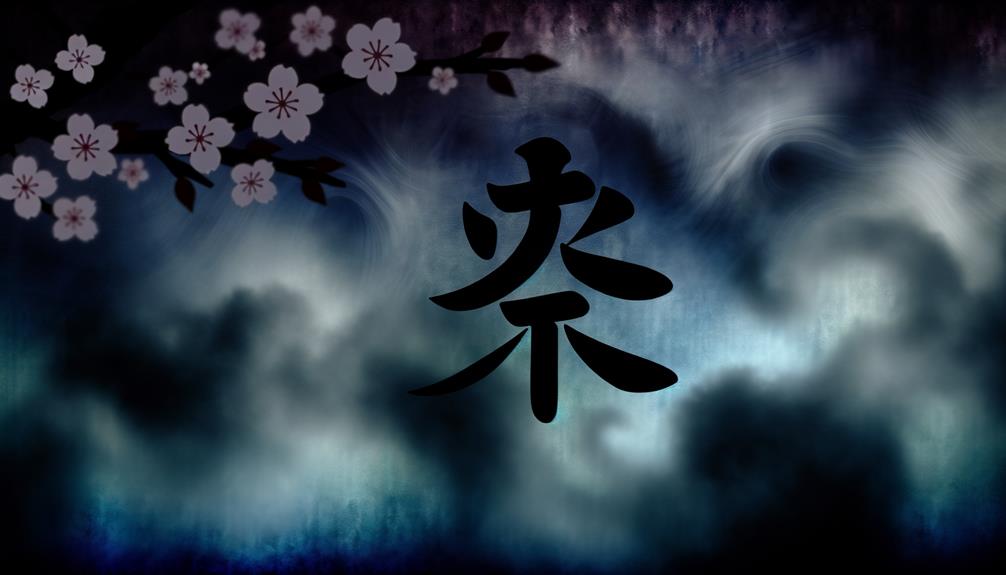
Numerous traditional and contemporary Japanese art forms, including ukiyo-e, calligraphy, and manga, intricately depict the concept of death, leveraging the kanji '死' (shi) to convey profound cultural and philosophical messages.
In ukiyo-e, artists like Tsukioka Yoshitoshi explored themes of mortality and the afterlife, using detailed, evocative imagery.
Calligraphy, or 書道 (shodō), transforms the character '死' into an aesthetic experience, blending the stark reality of death with artistic elegance.
Contemporary manga often portrays death to address existential themes, with creators such as Naoki Urasawa using '死' to explore human psychology and societal issues.
Consequently, through diverse mediums, Japanese art offers a rich, nuanced reflection on the universal and inevitable phenomenon of death.
Religious Views
Shaped by centuries of spiritual tradition, the symbol for death, '死' (shi), occupies a significant place within the religious practices and beliefs of Shintoism and Buddhism in Japan.
In Shintoism, death is often perceived as a source of impurity, necessitating rituals for purification. Conversely, Buddhism views death as part of the cycle of samsara, the continuous cycle of birth, death, and rebirth.
- Shinto purification rites (kegare)
- Buddhist memorial services (hotsubon and obon)
- Concept of karma influencing rebirth
- Ema plaques for prayers to the deceased
- Funerary customs blending both religious practices
This amalgamation of beliefs underscores the profound cultural reverence and complex understanding of death in Japanese spirituality.
Modern Usage
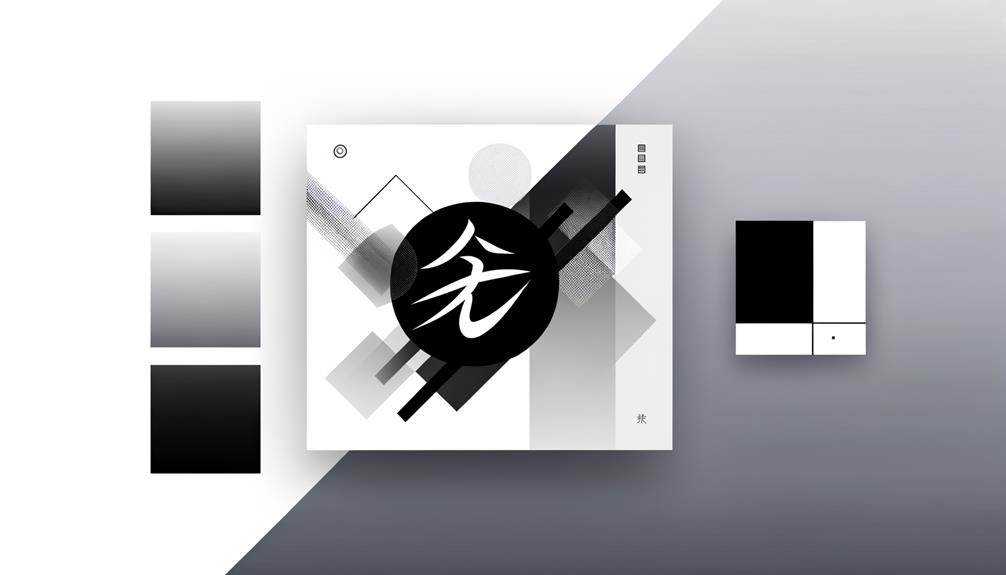
In contemporary Japan, the symbol for death, '死' (shi), manifests in various facets of daily life and popular culture, reflecting both respect and superstition.
In media, '死' is frequently encountered in literature, films, and anime, often symbolizing an ominous presence or a pivotal plot point. Beyond entertainment, the character is present in various idiomatic expressions and formal documents, such as death certificates and obituaries.
Additionally, the character is used in medical and legal contexts to denote mortality and related matters. While its presence in these areas underscores the inescapable reality of death, it also illustrates a cultural nuance where reverence for the deceased is balanced with a pragmatic acceptance of life's impermanence.
Taboos and Superstitions
Despite its pervasive presence in modern contexts, the symbol for death ('死') in Japanese culture is also surrounded by a host of taboos and superstitions that influence social behavior and traditions.
The cultural aversion to this symbol is deeply embedded in daily life and manifests in various ways:
- Numbers: The number 4 (四, 'shi') is often avoided because its pronunciation is similar to '死'.
- Gifts: Items such as combs and potted plants are considered inauspicious gifts due to their associations with death.
- Hospital Visits: Bringing potted plants to hospital patients is taboo, symbolizing the patient's roots being fixed, akin to staying in the hospital forever.
- Funerals: Mirrors are covered to prevent the spirit of the deceased from being trapped.
- Language: Euphemisms are often used to avoid saying '死' directly.
Comparative Analysis
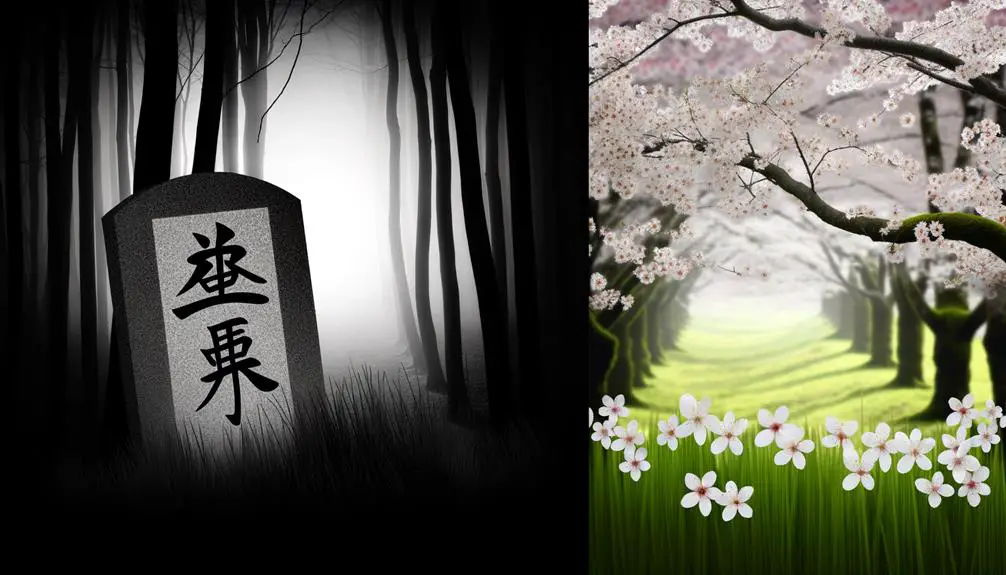
A comparative analysis of the symbol for death ('死') across different cultures reveals intriguing variations in its representation, significance, and associated practices.
In Japanese culture, '死' is intertwined with concepts of reincarnation and ancestor worship, reflecting a complex relationship with mortality.
Contrastingly, in Western cultures, symbols like the Grim Reaper embody the inevitability and fear of death.
In Chinese culture, '死' often carries even stronger taboos, influencing language and daily life to avoid its use.
Meanwhile, in Mexican culture, Día de los Muertos celebrates death as a continuation of life, symbolized by vibrant imagery like skulls (calaveras).
These cultural differences illustrate how the symbol for death transcends language, encapsulating diverse beliefs and customs surrounding the end of life.
Conclusion
The kanji for death, 'shi' (死), encapsulates profound historical, cultural, and literary significance within Japanese society. Its representation in art and religious contexts underscores a deep reverence for the cycle of life and the inevitable cessation of existence.
Modern usage and associated taboos reflect a society grappling with the delicate balance of acknowledging mortality while embracing life. Consequently, the symbol 'shi' serves as a poignant reminder of the transient nature of human existence within the rich tapestry of Japanese culture.

